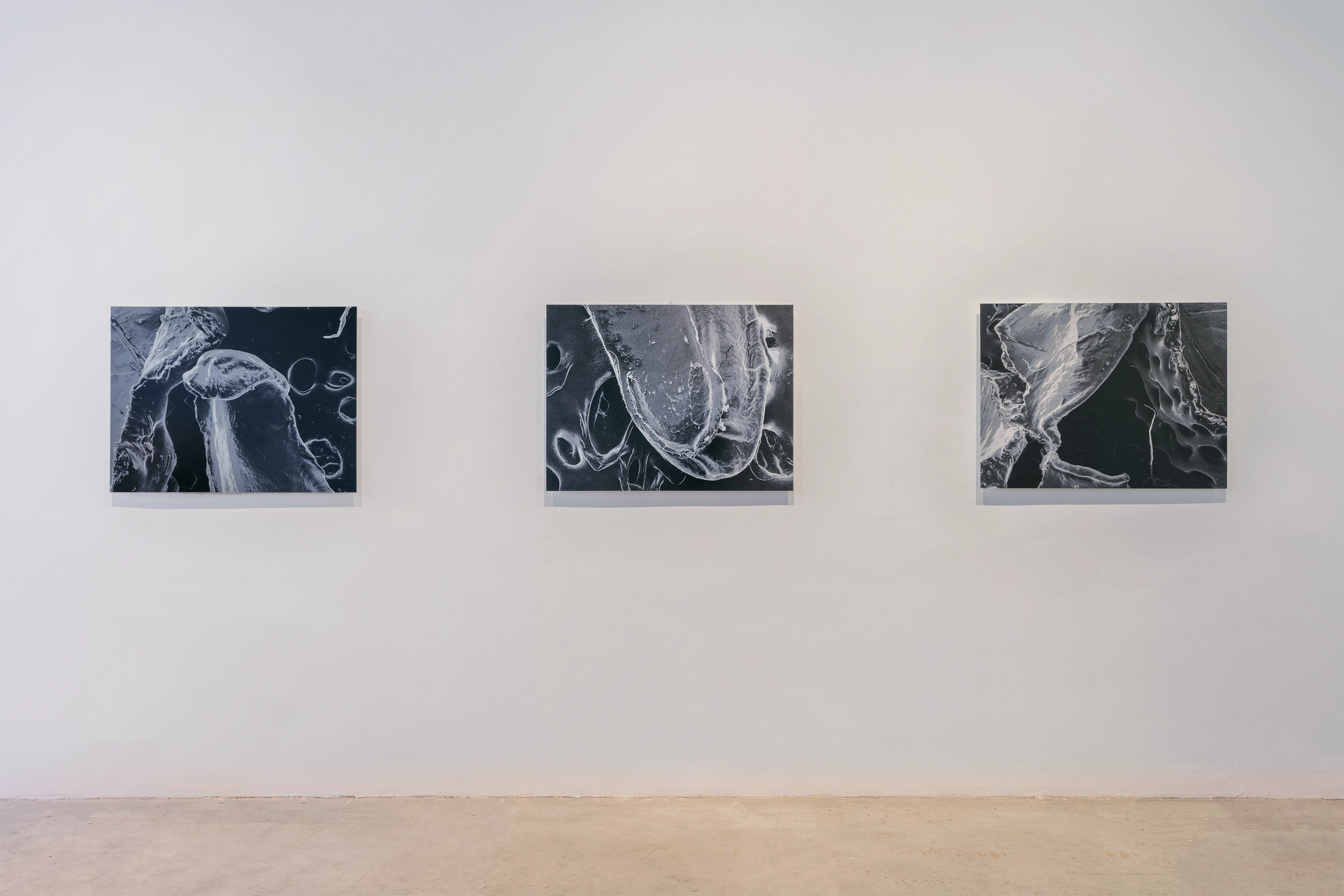Primary Fission

untitled (Primary Fission), 2023
Installation View
Vida Transbordante e os Desejos do Mundo, Solar dos Abacaxis, Rio de Janeiro, Brazil (2023)
Primary Fission (2015-2020) is a body of works that reflects Meres's interest in systems of representations and in the formal conventions used to convey objectivity through images and exhibition displays. Departing from an ongoing concern with the structures used to establish which human characteristics and behaviors are considered "natural", the works in the series explore aspects of nature that have often intrigued specialists, such as the asexual reproduction of hermaphroditic flatworms or the polyammorous sexuality of sea stars. By focusing on unusual aspects of nature, Meres further elaborates previous works on representations of difference and queerness and offers a meditation on the mechanisms that are used to define certain human behaviors as unnatural or unhealthy.
Meres worked with electrical engineers at Columbia University to produce the images in the series through a highly-accurate microscope that is widely used in scientific publications. The microscope deploys electrons, instead of photons, as sources of information, therefore producing images without the use of light. Drawing from traditions of scientific imagery and geometrical abstraction in art history, the works in Primary Fission explore the formal conventions used to reflect authority in representations deemed to be impartial and highlight the inherently constructed nature of realist images.

untitled (Primary Fission), 2023
27 x 36 in
Electron micrograph, pigment print on metallic paper
The Telomeric Cut, 2016
HD video, 8″
The Telomeric Cut is a boundary-tracing experiment with scientific desire and immortal freshwater planarians. Over the past six months, I have worked with a scanning electron microscope at Columbia University to make images of planarians: hermaphroditic flatworms with an unusual capacity to regenerate and reproduce asexually by fission. Throughout the development of the experiment, I built an intimate zone of intensity and regeneration with planarians: I lived, nurtured, desired, laughed, imagined, suffered, co-endured, and cut with the planarians I had to partially kill to image. Each cut I traced on the planarians’ bodies would split the beings in two: one part would regenerate into a new, fully-functioning, organism while the other would be transduced into new life as an image. Wounds and death, in this context, are inseparable from the desire to regenerate and to become otherwise. As a form of intuitive splitting, the experiment entailed cutting with planarians as a means to reimagine the boundaries of difference – fissions in matters of species differentiation, sex, race and sensory perception – that define what it means to be human in the present.

untitled (Primary Fission), 2023
36 x 21 in
Electron micrograph, pigment print on metallic paper

P. Flexilis (The Telomeric Cut), 2023
66 x 22 in
Pigment print on metallic paper, aluminum

untitled (Primary Fission), 2016
36 x 27 in
Electron micrograph, pigment print on metallic paper


untitled (Primary Fission), 2023
27 x 36 in
Electron micrograph, pigment print on metallic paper